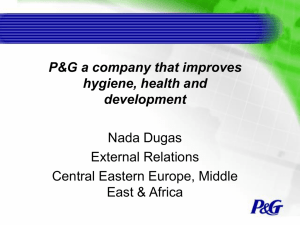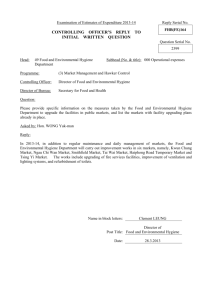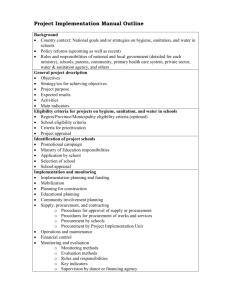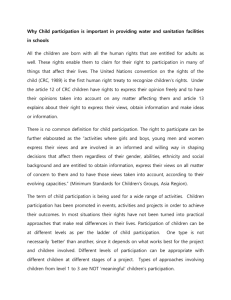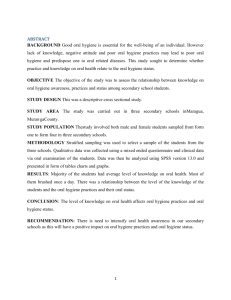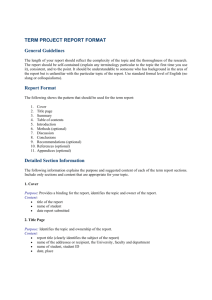Field-based evaluation of Hygiene, Sanitation, and Water in
advertisement
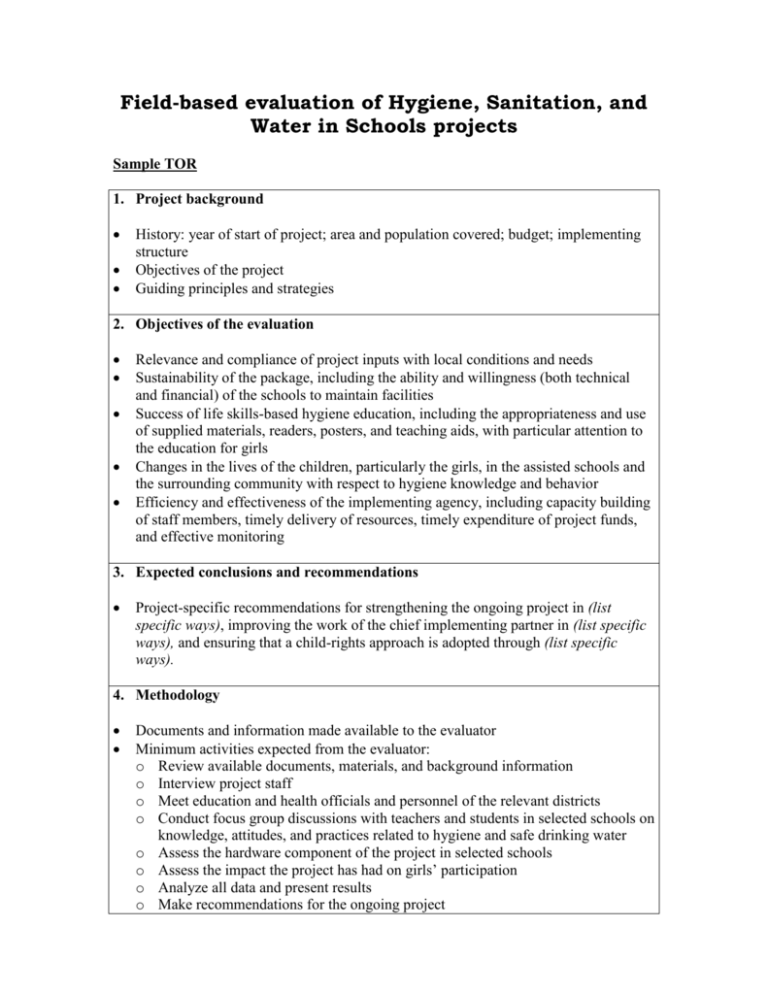
Field-based evaluation of Hygiene, Sanitation, and Water in Schools projects Sample TOR 1. Project background History: year of start of project; area and population covered; budget; implementing structure Objectives of the project Guiding principles and strategies 2. Objectives of the evaluation Relevance and compliance of project inputs with local conditions and needs Sustainability of the package, including the ability and willingness (both technical and financial) of the schools to maintain facilities Success of life skills-based hygiene education, including the appropriateness and use of supplied materials, readers, posters, and teaching aids, with particular attention to the education for girls Changes in the lives of the children, particularly the girls, in the assisted schools and the surrounding community with respect to hygiene knowledge and behavior Efficiency and effectiveness of the implementing agency, including capacity building of staff members, timely delivery of resources, timely expenditure of project funds, and effective monitoring 3. Expected conclusions and recommendations Project-specific recommendations for strengthening the ongoing project in (list specific ways), improving the work of the chief implementing partner in (list specific ways), and ensuring that a child-rights approach is adopted through (list specific ways). 4. Methodology Documents and information made available to the evaluator Minimum activities expected from the evaluator: o Review available documents, materials, and background information o Interview project staff o Meet education and health officials and personnel of the relevant districts o Conduct focus group discussions with teachers and students in selected schools on knowledge, attitudes, and practices related to hygiene and safe drinking water o Assess the hardware component of the project in selected schools o Assess the impact the project has had on girls’ participation o Analyze all data and present results o Make recommendations for the ongoing project Tools to be used (optional) 5. Staffing Minimum team size Composition of the team (experience, professional background, language skills, gender). Responsibilities of individual team members (optional): o Conducting and/or observing focus groups o Conducting observations o Conducting interviews o Keeping good, clear notes o Participating in daily debriefing sessions Profile of team leader Responsibilities of the team leader (optional): o Coordinating all activities in the field o Arranging for visits in advance o Leading debriefing sessions every day and ensuring that detailed notes are kept o Preparing the report 6. Analysis and submission of results Minimum contents of report: Title, table of contents, executive summary, introduction, assessment objectives and methodology, findings, lessons learned, recommendations, conclusion, appendices o The executive summary should summarize the activities evaluated, the purpose of the assessment, the methods used, and the major findings and recommendations. o The introduction should describe the evaluated activities, including the settings and problems addressed, objectives and strategies, and findings, and summarize the assessment context (purpose, partners, team composition, visited sites, and duration). The body of the report should describe the purpose, objectives, and methodology of assessment, indicate what data were collected, where, and how, and describe the methods of data collection and analysis. o The findings should provide the answers to the key objectives addressed in the assessment regarding the relevance, sustainability, and impact of the water and sanitation intervention and hygiene education. Recommendations should be linked with the findings. o A list of documents reviewed, persons interviewed, sites visited, and the general discussion format should be provided in the appendices. The schedule, plan of activities, list of terms of reference and abbreviations used, and budget should also be attached to the report. 7. Time frame 8. Budget (optional)




